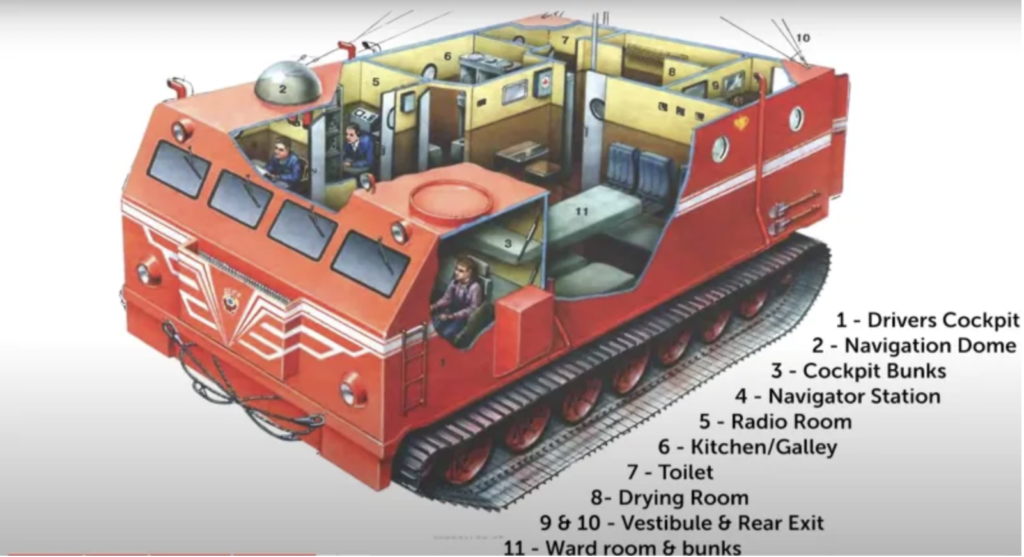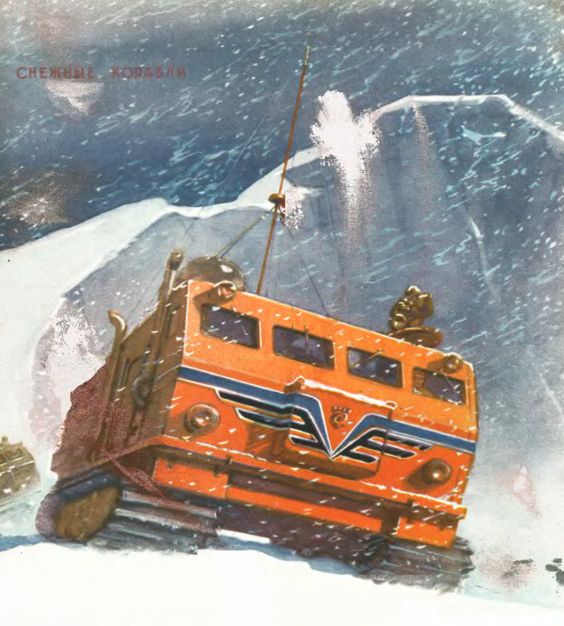KHARKOVCHANKA

A new vehicle
I’ve discussed the amazing American Snow Cruiser on other pages here but it was also the case that the Soviets built their own version called the ‘Kharkovchanka’. When the Russian’s decided to get involved in Antarctica in the International Geophysical Year (IGY) of 1957-8, they realised that the equipment that they had wasn’t up to the rigours of Antarctica.
After all, in those temperatures diesel fuel would freeze and could be cut with a saw. Occupants of the vehicles they were using had to light a fire underneath the engine to keep the diesel fuel from freezing solid and no-one really wanted to get out of a cosy cab to get a fire going or work on a broken engine. Also, up on the Polar Plateau beyond 3000 metres in height the thin air would starve the engines of oxygen.
So the Russians set out on an ambitious plan to create a new vehicle that would protect its crew while exploring Antarctica. They set their engineering people the task of designing and building this new vehicle in three months, and surprisingly the deadline was achieved when three Kharkovchankas rolled off the production line in the the city of Kharkov in 1959
Based on an extended T-54 Tank chassis these new vehicles had thick insulation and were fully enclosed, allowing a crew of six to work on the engine from inside. They carried enough diesel fuel in multiple fuel tanks to travel 1500 km without refuelling. The vehicle weighed 30 tonnes, could tow 60 tonnes and carried a crane capable of lifting twenty tonnes.

An epic journey
No sooner did the vehicles arrive in Antarctica in 1959 when they were given the task of travelling from Mirny, the Russian base on the coast to the Russian base at the magnetic south pole (Vostok station) and then to continue on to the American base at the South Pole (Amundsen-Scott Base) and return, a distance of 5000 km.
Towing heavy sledges of supplies they only managed to get around 11 litres per kilometre and a speed of around 5 km/hr. Because the engine was enclosed along with the living quarters the crew were continually covered in diesel. In spite of the problems encountered they made it and were welcomed at the U.S. base where, in honour of their journey, the he Soviet and American flags flew side by side.
After a three day rest at Amundsen-Scott base they headed for home. The entire trip took 89 days. The last of the Kharkovchankas was retired only a few years ago and is now standing as an historic monument at Progress Station (one of the Russian bases in Antarctica). Here is an excellent video telling you all you want to know.

